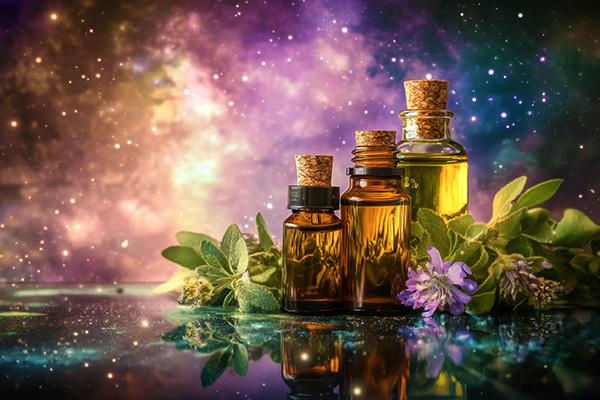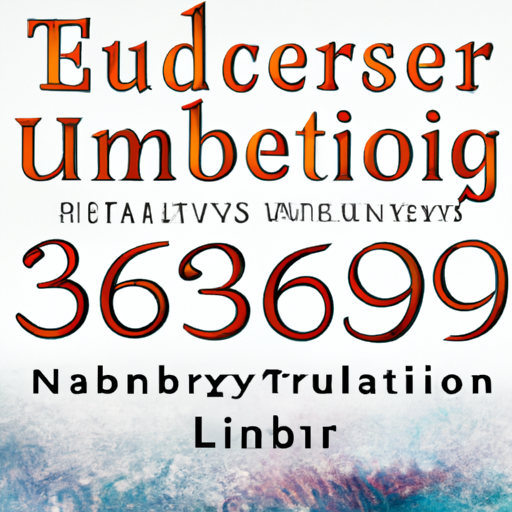 Do you sense an attraction to a higher purpose, a spiritual quest, or a deep urge to enhance the world around you? Or maybe you’ve recognized individuals in your life who seem to emanate kindness and understanding, who mend emotional pains with their presence, or who motivate others to appreciate the beauty in the world—even amidst despair.
Do you sense an attraction to a higher purpose, a spiritual quest, or a deep urge to enhance the world around you? Or maybe you’ve recognized individuals in your life who seem to emanate kindness and understanding, who mend emotional pains with their presence, or who motivate others to appreciate the beauty in the world—even amidst despair.
These individuals are recognized in spiritual circles as “lightworkers.”
Lightworkers are souls who have come here with a distinct spiritual calling—to improve the world. We serve as channels for divine love and light and the restorative energy of spirit, aiming to harmonize the planet’s energies.
The primary goal of lightworkers is to elevate human awareness to a more profound level. By embodying compassion, love, and insight, we act as examples for a more awareness-driven way of living. Our presence helps inspire others to awaken to their potential and aid in the collective advancement of humanity.
Lightworkers often execute their mission in subtle yet impactful ways. They don’t always proclaim their work or seek accolades for their contributions. Instead, they operate quietly, disseminating positivity through their deeds, words, and energy. Whether it’s extending kindness to a stranger, producing art that generates hope, or merely creating a supportive atmosphere for someone in distress, their impact is immeasurable.
What distinguishes lightworkers is not just their purpose but also their inherent strength. They possess a natural talent for healing and creating safety and comfort for others. The presence of these age-old souls on Earth neutralizes darkness, negativity, and destructive energies while emitting light, love, and healing across the globe.
In a world that can often feel dark and troubled, many lightworkers remain steadfast, choosing to shine their lights brightly. Look around; light workers are everywhere. Follow their light back to brightness ~ Renae A. Sauter
Numerous prophecies from various cultures have foretold the emergence of lightworkers during these pivotal times, highlighting their essential role in humanity’s spiritual progress and the planet’s healing, including the Hopi prophecies from Native Americans, the Mayan calendar, the Kali Yuga prophecies in Hinduism, the Christ Consciousness prophecies, the Kalachakra prophecy of Tibetan Buddhism, and the New Age teachings of the Age of Aquarius.
The Book of Revelation from the Bible also describes a period of significant upheaval and transformation, where spiritually aware individuals will help usher in an era of peace, harmony, and divine justice. These people are thought to play a crucial role in the ultimate spiritual conflict between light and darkness.
The label “lightworker” was introduced in the early 1980s by Michael Mirdad, a well-recognized author and healer noted for his teachings on compassion, healing, and spiritual awakening. He has been an influential personality in the New Age and metaphysical domains for many years. It was later popularized by Doreen Virtue in her 1997 work The Lightworkers Way. The notion of lightworkers has since gained broad recognition in the metaphysical realm.
A prevalent misconception about lightworkers is that they are all seasoned mystics or spiritual leaders. While it is true that many lightworkers engage as psychics, mediums, healers, spiritual mentors, and shamans, the truth is that a lightworker can be anyone—from parents, students, office staff, and retail workers to maintenance personnel, software engineers, and registered nurses.
What binds lightworkers together is their commitment to instilling more light, love, and healing into the universe, often through seemingly mundane actions that result in extraordinary outcomes.
Awakening Of The Lightworker
Lightworkers volunteer before birth, aiming to aid in healing the world and liberating humanity from fear and negativity. Each lightworker enters this life with a sacred mission, yet the material focus of existence on Earth can induce a form of spiritual amnesia. This forgetfulness leads them to lose sight of their divine essence and the remarkable abilities they hold to assist in healing the planet and its beings. When lightworkers become disconnected from their true mission, they may feel lost, dissociated, or fearful.
For many lightworkers, their journey typically starts with a significant spiritual awakening. This turning point often occurs following a traumatic experience, such as loss, illness, or a personal crisis that challenges their worldview and encourages them to seek a deeper purpose.
Following their awakening, lightworkers experience a notable transformation in awareness. They may sense an undeniable realization that their lives will be forever altered, urging them to embark on transformative changes and embrace their purpose.
As more lightworkers awaken, they recall faint memories of their pre-birth commitments, reminding them of their pledge to assist humanity during a crucial juncture in human history. This awakening usually comes with an understanding: it’s time to discard material distractions and hone in on their mission of healing and transformation.
Lightworkers frequently discover their gifts during or shortly after their spiritual awakening. These inherent talents may include energy healing, psychic and intuitive skills, mediumship and channeling, divination, earth-based practices, dream and astral work, mystical insight, and more.
Typically, lightworkers do not need to develop new skills or talents to accomplish their mission; the necessary abilities lie dormant within them. Instead, one of their greatest challenges is to let go of fears and doubts that prevent them from reaching their full potential. When they remember that their power originates from their Higher Self, Spirit, and the Divine, they gain the confidence to utilize their gifts for healing and inspiration.
This awakening process can be exhilarating yet intimidating. Newly awakened lightworkers often find themselves navigating unfamiliar terrain, but their inherent resilience and spiritual gifts allow them to adjust swiftly. They commonly engage in practices like meditation, energy healing, or spiritual exploration to align with their mission. Despite the difficulties, awakening represents a critical step toward realizing their purpose.
Light freely extends itself, filling every available space. It does not seek recompense; it neither questions whether you are an ally or an adversary. It gives generously without losing anything in the process ~ Michael Strassfeld
Signs You Are A Lightworker
If you feel a similar urge to assist others or improve the world, and sense a connection to a larger purpose, you may be a lightworker. Here’s a list of common signs that might indicate it is your calling to be a lightworker:
Healing Abilities: You possess innate abilities to heal yourself and others on physical, emotional, mental, or spiritual levels, and people and animals often come to you for guidance, comfort, or healing. The ability to heal is a common characteristic of all lightworkers.
Feeling Different: You’ve always felt somewhat different from others, with a sense that you have a distinct purpose in life.
Intense Compassion: You possess immense empathy and compassion, feeling deeply for the struggles and hardships of others.
Positive Impact: Individuals are naturally drawn to you for support, guidance, or comfort without you even trying, and your presence tends to elevate and inspire those around you.
Energy Sensitivity: You are acutely aware of the energies surrounding you, whether from people, places, or objects.
Powerful Intuition: You have heightened intuition and psychic awareness, often following your gut instincts which usually lead you correctly.
Spiritual Awareness: You harbor a keen interest in spiritual matters, consistently seeking deeper understanding and meaning beyond the physical realm.
Mystical Experiences: You have encountered mystical occurrences, such as psychic insights, prophetic dreams, or interactions with angels or spiritual entities.
Exceptional Resilience: You have triumphed over considerable life challenges, personal difficulties, or childhood trauma, emerging with greater tenacity, perseverance, and an unshakeable determination.
Growth Focus: You are naturally committed to self-betterment, personal development, and spiritual growth, actively working to heal your own life as a step toward healing the world.
Love Of Learning: You possess a strong thirst for knowledge and consistently seek to broaden your understanding of both the world and yourself.
Visionary Outlook: You harbor a powerful desire to resolve social and environmental issues, fueled by a vision of a better future.
Sense of Urgency: You are propelled by a compelling sense of purpose and urgency to fulfill your mission during this lifetime, even if the specifics remain unclear.
Altruistic Drive: You experience an inner calling or feel a responsibility to assist others and make a positive difference, often prioritizing their needs over your own.
Nature Connection: You feel a profound bond with nature and animals, finding healing and revitalization in the natural environment.
If you identify as a lightworker, it’s vital to release confusion and recognize the simplicity of your mission. Keep the light of positive energy radiating brightly within you, and share that beauty with the world ~ Caroline Myss
The Archetypal Role Of The Lightworker
Lightworkers are called to embrace a distinctive archetypal role in their lifetime, dictated by their unique talents, life experiences, and spiritual gifts. These roles include:
Alchemists: Experts in personal and collective transformation, utilizing spiritual tools and inner work to convert negative energies into positive ones, facilitating significant change.
Astral Travelers: Explorers of different dimensions and realms who return with valuable insights and wisdom to share, promoting spiritual growth and expansion.
Avatars: Highly evolved souls who embody divine consciousness on Earth, serving as living exemplars of enlightenment and divine purpose, often undertaking transformative missions to restore cosmic harmony.
Channelers: Mediums for messages from higher realms, including angels and spirit guides, who provide guidance, healing, and knowledge to others.
Creators: Individuals who manifest their spiritual gifts through the arts, such as painting, music, dance, or writing, channeling divine inspiration to uplift and heal.
Diviners: These lightworkers excel at using divination tools like tarot, runes, pendulums, astrology, and numerology to connect with guidance and insights.
Earth Angels: Focused on environmental restoration, these lightworkers engage with the earth’s energies to foster balance, protect nature, and participate in activism or sustainable living.
Empaths: Highly sensitive to the emotions and energies of others, empaths absorb these energies to aid healing or provide guidance, requiring practices to guard against energy overload.
Gridworkers: Caretakers of the Earth’s energy grid, assisting in balancing and healing the planet’s energy fields through intentional work and spiritual connection.
Healers: Proficient in physical, emotional, and spiritual healing, employing energy work, therapies, and compassionate care to facilitate deep healing for others.
Leaders: Prominent figures within the lightworker community who guide spiritual groups, metaphysical circles, and humanitarian initiatives, motivating collective action for the greater good.
Lightkeepers: Radiators of joy, hope, and light, these lightworkers spread positivity and emanate divine energy, uplifting everyone in their vicinity.
Manifestors: Individuals capable of shaping reality through focused thought and intention, bringing their visions to fruition and collaborating with the Universe.
Prophets: Receivers of divine wisdom, these lightworkers convey messages from higher realms to aid humanity in spiritual growth and guidance.
Mystics: Those deeply connected to spiritual dimensions, mystics traverse mystical states of consciousness and channel divine insights and inner knowing to assist others on their path.
Pathfinders: Leaders who exemplify the way, demonstrating new realities and spiritual growth through authentic actions and living aligned with their truth.
Readers: Psychics, intuitives, and Akashic record readers who possess the ability to perceive information beyond physical senses, tapping into universal soul archives for guidance, clarity, and healing.
Shamans: Spiritual guides utilizing ancient wisdom and rituals to connect with earth, wildlife, plants, and spirit realms, fostering healing, spiritual evolution, and transformation.
Starseeds: Beings from other star systems or realms who often feel out of place on Earth. Their purpose is to awaken humanity through their unique insights and capabilities.
Teachers: Disseminators of knowledge, these lightworkers guide others on their spiritual journeys through teaching, mentoring, or writing, focusing on raising consciousness and spreading enlightenment.
Transmuters: Skilled at converting negative energies into positive ones, transmuters serve as spiritual alchemists, helping to convert darkness into light.
Unifiers: These lightworkers reconcile diverse energies and bring people together to foster unity, tranquility, and collective healing.
Every lightworker plays a crucial role in the collective spiritual awakening, contributing their unique talents and wisdom to cultivate a more harmonious and enlightened world.
To discern genuine light workers, consider these straightforward questions: Do they empower you to heal yourselves or require you to follow their doctrines and venerate their teachings? Do they promote your self-discovery and awareness, guiding you inward, or do they direct you toward following their path of enlightenment? ~ Patricia Cori
The Challenges Of Being A Lightworker
The journey of a lightworker is not devoid of obstacles. We inhabit a world where negativity, fear, and fragmentation frequently overshadow the collective consciousness. Daily, lightworkers labor diligently to counteract these energies by maintaining a vibration of love and light. Nevertheless, this duty can be taxing, especially for those of us with heightened sensitivity.
Lightworkers are profoundly connected to the emotions, energies, and attitudes of others. This sensitivity often leaves us vulnerable to energetic drains, particularly when we encounter negativity, resistance, or high-energy environments. Additionally, we are susceptible to external influences such as pollution, noise, and chemicals that can impact our emotional and physical well-being.
In spite of these challenges, lightworkers endure with steadfast resolve. Compassion and empathy compel us to aid others, frequently at a significant personal cost. This selfless commitment, while a gift, can also become a burden, requiring us to balance our personal needs with the obligation to serve a greater purpose.
If you identify as a lightworker, it is crucial to acknowledge your gifts and take proactive measures to care for your health, maintain energetic equilibrium, and nurture your spiritual connection. Regularly restore your energy through self-care practices that foster joy and tranquility, such as meditation, nature walks, or creative outlets.
Safeguard your energy by establishing clear and healthy boundaries with others, especially in contexts where you feel depleted or overwhelmed. Consistently tend to your spiritual practices—prayer, journaling, energy work, or divination—allowing you to stay grounded, connected, and open to the guidance and insights you require.
As a lightworker, forging connections with like-minded individuals is vital. Surround yourself with a nurturing community of fellow lightworkers or spiritual seekers who can provide encouragement and understanding during challenging periods.
Being a lightworker does not necessitate formal qualifications or credentials. The sole requirement is an authentic desire to improve the world. Simply live with intention, compassion, and love, making use of your unique gifts to illuminate the path for others. Remember that your journey is unique and divinely orchestrated. Trust in your capacities and the impact you’re making, even if it is not readily apparent. Understand that your efforts, regardless of how subtly or invisibly they manifest, contribute to the overall well-being of the world.
Lightworkers are indispensable to our shared quest for a brighter future. Your unwavering devotion to healing, uplifting, and transforming the world speaks volumes about the immense power of love and light. As we navigate these turbulent times, let’s acknowledge the essential role of lightworkers and support them however we can.
If you do not identify as a lightworker but know someone who embodies these characteristics, take a moment to recognize and celebrate their contributions. Their mission is often a challenging one, and your support can significantly impact their journey. Display admiration and respect for them, encouraging them to embrace their gifts. By uplifting the lightworkers in our lives, we create a ripple effect that spreads positivity and healing across the planet.
|
 About The Author: Venus About The Author: Venus
Venus resides in Arizona and has assisted clients with her range of psychic gifts for over twenty years. She possesses abilities in Clairvoyance, Clairaudience, Clairsentience, and Empathy, and is also a certified Life Coach and Reiki practitioner. Departed loved ones frequently make their presence known during readings, either at her invitation or simply appearing to convey their messages. Messages also come through her direct communications with Spirit and Angels, delivering the insights clients need to move toward happiness, fulfillment, and success. Alongside her work as a psychic, life coach, and reiki practitioner, she has spent the last decade teaching and leading seminars designed to help others tap into their higher knowledge. If you’re seeking a compassionate psychic who can connect with you immediately without tools, you will want a reading with Venus at: PsychicAccess.com.
|
Understanding the Purpose of Lightworkers: Healing the World
In a world overwhelmed by chaos, suffering, and negativity, there exist individuals who feel a distinct calling to spread light, love, and healing to others. These individuals are referred to as lightworkers, and they play an integral part in the collective awakening and transformation of humanity. But what truly defines a lightworker, and what is their role in mending the world?
A lightworker is someone who harbors a profound sense of obligation to effect positive change in the world. They are motivated by a robust desire to assist others, uplift humanity, and facilitate healing and transformation on both personal and global levels. Lightworkers are often highly sensitive souls, finely attuned to the emotions and energies of those around them. They possess an inherent gift for empathy, compassion, and healing.
The purpose of lightworkers is multi-dimensional, incorporating diverse facets of healing and transformation. Firstly, lightworkers exist to awaken and inspire others. They serve as luminous guides, illuminating a path for those who are lost or struggling. Through their words, actions, and mere presence, lightworkers spark an inner realization within others, motivating them to embark on their unique journeys of self-discovery and personal evolution.
Secondly, lightworkers function as facilitators of healing. They have an innate ability to connect with universal energy and channel it for the wellness of all. Whether through energy healing practices, intuitive guidance, or simply being a comforting presence, lightworkers assist individuals in releasing emotional trauma, healing past pains, and attaining personal peace and balance. By healing individual souls, lightworkers contribute to the overall healing of humanity.
Moreover, lightworkers act as catalysts for beneficial change in the world. They are not content with merely aiding individuals; they also aim to address the underlying causes of suffering and injustice in society. Lightworkers frequently find themselves drawn to social and environmental issues, advocating for equality, justice, and the safeguarding of our planet. They utilize their voices, talents, and resources to cultivate a more compassionate and harmonious world.
It is essential to recognize that lightworkers are not confined to any specific profession or role. They can be found in every sphere of life—teachers, artists, nurses, activists, entrepreneurs, and beyond. What unites them is their collective mission to spread light and healing to the world. Lightworkers understand that their purpose transcends individual success or material gain. They are guided by a higher calling, an inner knowing that they are here to create a positive impact.
However, the journey of a lightworker is not always smooth. They frequently encounter challenges, uncertainty, and setbacks along their path. The weight of the world’s suffering can feel heavy, and the task of healing may seem daunting. Nevertheless, lightworkers draw strength from their connection to the divine, to the universal energy that permeates all existence. They tap into this boundless source of love and light to sustain their mission and persist despite obstacles.
In conclusion, lightworkers are individuals who have committed their lives to mending the world. They carry a deep sense of purpose, driven by a wish to awaken, heal, and inspire others. Through their compassion, empathy, and dedication, lightworkers play a crucial role in the collective awakening and transformation of humanity. They shine as beacons of light, leading others toward healing and tirelessly working to foster a more loving and harmonious existence. Continue reading →
 Essential oils have been revered for ages as vital companions in spiritual and healing practices globally. Derived from the fragrant essence of flora, these oils embody more than mere scents; they encompass the energetic signature and vibrational resonance of their plant origins.
Essential oils have been revered for ages as vital companions in spiritual and healing practices globally. Derived from the fragrant essence of flora, these oils embody more than mere scents; they encompass the energetic signature and vibrational resonance of their plant origins.













